- Home
- Peter Ackroyd
Charlie Chaplin
Charlie Chaplin Read online
Studio portrait of Chaplin, 1910.
ALSO BY PETER ACKROYD
Fiction
The Great Fire of London
The Last Testament of Oscar Wilde
Hawksmoor
Chatterton
First Light
English Music
The House of Doctor Dee
Dan Leno and the Limehouse Golem
Milton in America
The Plato Papers
The Clerkenwell Tales
The Lambs of London
The Fall of Troy
The Casebook of Victor Frankenstein
Three Brothers
Nonfiction
Dressing Up: Transvestism and Drag: The History of an Obsession
London: The Biography
Albion:The Origins of the English Imagination
Venice: Pure City
London Under
Biography
Ezra Pound and His World
T. S. Eliot
Dickens
Blake
The Life of Thomas More
Shakespeare: The Biography
Ackroyd’s Brief Lives
Chaucer
J.M.W. Turner
Newton
Poe: A Life Cut Short
Poetry
Ouch!
The Diversions of Purley and Other Poems
Criticism
Notes for a New Culture
The Collection: Journalism, Reviews, Essays, Short Stories, Lectures, edited by Thomas Wright
Copyright © 2014 by Peter Ackroyd
All rights reserved. Published in the United States by Nan A. Talese / Doubleday, a division of Random House LLC, a Penguin Random House company.
www.nanatalese.com
Originally published in Great Britain by Chatto & Windus, an imprint of the Random House Group Limited, London.
DOUBLEDAY is a registered trademark of Random House LLC.
Nan A. Talese and the colophon are trademarks of Random House LLC.
Jacket design by Michael Windsor
Jacket image: The Circus © Roy Export S.A.S. Scan courtesy Cineteca di Bologna
Library of Congress Cataloging-in-Publication Data
Ackroyd, Peter, 1949–
Charlie Chaplin / Peter Ackroyd.
pages cm.—
Includes bibliographical references.
Pages cm.—
ISBN 978-0-385-53737-7 (hardcover) ISBN 978-0-385-53738-4 (eBook)
1. Chaplin, Charlie, 1889–1977 2. Motion picture actors and actresses—United States—Biography. 3. Comedians—United States—Biography. I. Title.
PN2287.C5A48 2014
791.4302′8092—dc23
[B] 2014013009
v3.1
Contents
Cover
Other Books by This Author
Title Page
Copyright
1. A London Childhood
2. On Stage
3. Keep It Wistful
4. Making a Living
5. The Rhythm
6. The Eternal Imp
7. Charlee!
8. Mutual Relations
9. The Little Mouse
10. The Ostrich Egg
11. Home Again
12. Why Don’t You Jump?
13. The Edge of Madness
14. The Beauty of Silence
15. The Machine
16. The German Tramp
17. Let Us Work and Fight
18. Proceed with the Butchery
19. No Return
20. The Shadows
Bibliography
A Note About the Author
1
A London Childhood
Welcome to the world of South London in the last decade of the nineteenth century. It was frowsy; it was shabby; the shops were small and generally dirty. It had none of the power or the energy of the more important part of the city on the other side of the Thames. It moved at a slower pace. All the accounts of it, in the late nineteenth and early twentieth centuries, describe it as a distinct and alien place. It was in a sense cut off from the life of the greater London; this may account for the air of exhaustion, and of torpor, which could hit the unwary. It was the site of small and noisome trades such as hat-making and leather-tanning. Factories abounded for the manufacture of biscuits, jam and pickles. Glue factories stood adjacent to timber warehouses and slaughterhouses. The predominant smells were those of vinegar, and of dog dung, and of smoke, and of beer, compounded of course by the stink of poverty. By the end of the nineteenth century Kennington, the earliest home of Charles Chaplin, had all the characteristics of a slum.
The areas south of the river had for centuries also been the place of somewhat suspect pleasures, such as brothels and pleasure gardens. That tradition was continued in the nineteenth century with the public houses, gin palaces and music halls of the area. One of the first music halls, the Winchester, opened in South London in 1840. The Surrey followed eight years later. Two of the great halls, the Canterbury and Gattis-in-the-Road, were in the vicinity along the Westminster Bridge Road; smaller halls were to be found everywhere. The stars of the music hall would congregate on Sunday mornings at the White Horse, the Queen’s Head, the Horns or the Tankard, public houses which the young Chaplin knew well. The music-hall booking agents were located in Lambeth.
Since South London was separated from the rest of the capital, it acquired its own communal atmosphere; the houses and tenements were bursting with people, so the women and children spent much of their time on the streets close to their dwellings. They sat outside on chairs, or leaned from the windowsills. As a result the neighbourhood itself, rather than the individual household, was the true family; wives looked out for each other, and the children played together. One of those children was Charles Chaplin. “They are my people, these cockneys,” he wrote in a magazine article in 1933. “I am one of them.” South London would remain the source and centre of his inspiration.
The origins of Charles Chaplin are mysterious. No certificate of his birth has ever been found, and no entry in a baptismal register exists. He once travelled to Somerset House in search of his birth certificate, but there was nothing there. He sought himself here, he sought himself there, but he could not find himself anywhere. He might have come out of nowhere. The place of his birth is equally mysterious. He believed that he had been born in “East Lane,” off the Walworth Road; the narrow thoroughfare is called East Street, but it was locally known as a “Lane” because it boasted a loud and vigorous Sunday morning street market with its costermongers, old-clothes sellers and various hawkers or traders. (“Lane” was the nomenclature generally given to a street market.) He may or may not have first seen the world there. Another difficulty arises. He confided on occasions to his friends that he was not sure of the identity of his biological father; nevertheless he took the name of a successful music-hall artist, Charles Chaplin, who was for a while married to his mother. He once said to an assistant, Eddie Sutherland, that “I don’t know, actually, who my father was.” He may have been, in the phrase of the period, a love child.
There is less difficulty about the identity of his mother. Hannah Chaplin gave birth to a boy in the middle of April 1889, at eight o’clock in the evening. An announcement was placed in a music-hall paper, The Magnet, in the following month. “On the 15th, the wife of Mr Charles Chaplin (née Miss Lily Harley) of a beautiful boy. Mother and son both doing well. Papers please copy.” The Magnet was out by a day: Chaplin was born on April 16.
Hannah came from a somewhat rackety family, the Hills, many of whose members lived in the immediate vicinity of East Street; toil and poverty had left their mark on some of them, compounded by a streak of madness in the female line. Lily Harley
was her stage name. She went on the boards as a singer at the beginning of 1884, and her musical career earned some success before entering a decline.
There is no doubt that she met Mr. Chaplin when he found lodgings with the Hill family in Brandon Street, Walworth; she was nineteen years old, and already pregnant, but the baby was not Chaplin’s. The child, Sydney, was said by Hannah herself to be the result of an elopement to South Africa with a rich bookmaker named Sydney Hawkes. Whatever the truth of the matter Charles Chaplin married her in June 1885, and gave the infant his surname. He also gave Hannah’s second son his surname. This child bore his first name, too, but he walked out on Hannah a year after the birth. It must be suspected that the fault was her infidelity. He may have guessed, or suspected, that the infant son was not his. Chaplin later confessed that his mother had enjoyed many affairs; it is also more likely than not that, in moments of distress and poverty, she took to the streets. In My Autobiography Chaplin states that “to gauge the morals of our family by commonplace standards would be as erroneous as putting a thermometer in boiling water.” In his subsequent films he is preoccupied by the role of the prostitute.
Hannah Chaplin, c. 1895.
Courtesy of Interfoto Argentur
Charles Chaplin senior, c. 1885.
It is a complex and bewildering saga, but perhaps not an unusual one in working-class South London, where husband and wife were often parted and where women drifted in and out of prostitution to save their families. Drink played its part, too, in the dissolution of family ties. Alcohol was, in a sense, the ruin of the Chaplins.
Charles Chaplin senior’s first recorded performance took place in 1887. His image, complete with topper and dress coat, is to be found on the cover of a music sheet for a song entitled “Pals Time Cannot Alter”; he also achieved success with songs such as “Eh, Boys?,” “As the Church Bells Chime” and “Oui! Tray Bong!” He had a pleasant baritone voice and an easy stage presence; he played the “swell,” the man about town, whose debonair attitude is matched by his elegant dress of top hat, cravat and morning suit. Champagne, however, may have been his drink of choice off as well as on the stage; in the manner of so many music-hall artistes, he descended into alcoholism.
It was often surmised that Chaplin possessed Jewish blood; he denied it, saying that “I have not that good fortune.” Yet on other occasions he hinted, or meditated upon, a possible Jewish identity. Since he did not know who his father was, there was some room for speculation. Yet it seems certain that he had Romany ancestors; he claimed that his maternal grandmother was “half-gypsy.” In a letter, found after his death, he was informed that he had been born in a gypsy caravan at Smethwick, near Birmingham; since the informant was named Jack Hill, there may be some truth to the story.
Chaplin’s adult friends accepted his mother as a gypsy; it is reported that he himself was familiar with the English variant of Romany, and in particular was fluent in the patois among gypsies and street entertainers of London. Chaplin’s eldest son Charles Junior wrote, in his memoirs, that “my father has always been inordinately proud of that wild Romany blood.” Towards the end of his life Sydney Chaplin, Charles Junior’s older half-brother, married a Romany woman known as “Gypsy.”
Hannah and her two small sons did not remain long in East Street. Sydney’s school records indicate that they moved from address to address in the same neighbourhood; this pattern would continue throughout Chaplin’s childhood. Hannah had embarked on yet another affair when Chaplin was two or three years old; she bestowed her affections on a successful variety star, Leo Dryden, who composed music-hall songs on the theme of queen and country. One of his most successful ballads is the still remembered “The Miner’s Dream of Home.” His prosperity may have marked the moment when mother and children moved from the rowdy and populous neighbourhood of East Street to the relative quiet and salubriety of West Square. It was only half a mile away, but it was a move to another country.
The newly established family now had a housemaid, and Chaplin remembered the Sunday excursions they made down the Kennington Road. He wore a blue velvet suit, and blue gloves to match it. He recalled the elegance of the Westminster Bridge Road, with its fruit shops, restaurants and music halls; he remembered sitting on top of a horse-drawn bus and putting up his little hands to touch the flowers of the lilac trees. He never forgot those moments of pure delight. He also recalled the odour of freshly watered roses, sold by the flower-girls on the corner of Westminster Bridge. In his subsequent films, flowers are often a token of fragile or doomed love.
These are descriptions quite different from the more sordid realities of his South London childhood. Nevertheless they can be considered true memories of the past and, as such, the first stirrings of his imagination. It is clear enough that there was a short period, perhaps of two or three years, in which he and his family were not in poverty; this is perhaps significant since the “little fellow,” as Chaplin often referred to his character on screen, the tramp by the name of Charlie, gives the impression of having come down in the world from a presumed state of greater affluence.
In this happy period Hannah Chaplin had a child by her lover, Leo Dryden; Wheeler Dryden was born at the end of August 1892, and had no discernible place in his half-brother’s childhood. Hannah’s relationship with Dryden in any case came to an end in the spring of 1893 when he left her, removing his son with him. She was not considered by him to be a fit mother. This was the time when all her troubles started. Her mother, Mary Ann Hill, had been committed to an asylum a few weeks before. The doctors recorded that Mrs. Hill “is incoherent. She says that she sees beetles, rats, mice and other things about the place.”
Hannah, with two sons in her care, was therefore forced to shift for herself as her family could offer her no support. It is not certain how she lived. She may have found another lover or a succession of casual lovers. Chaplin later related a story in My Autobiography that she had, at some point in 1894, found a singing engagement at the Canteen in Aldershot. This was a military venue, with a correspondingly rough and vocal audience. Hannah’s voice failed during her performance and she was booed off the stage, whereupon the theatrical manager put on the young Chaplin in her place. He sang a popular song of the period, “ ’E Dunno Where ’E Are.” The public threw coins at the stage whereupon he decided to pick up the money before resuming his performance. This provoked more laughter and the young boy continued a routine of song and impersonation; at one point he imitated the cracked voice that had curtailed Hannah’s act. Eventually to much applause she appeared once again before the audience, and carried off her child. Chaplin said that she never regained her voice, although she did in fact manage one last engagement at the Hatcham Liberal Club where she was billed as “Miss Lily Chaplin, Serio and Dancer.”
It is an interesting story and may indeed be true, although the exhaustive music-hall listings of the trade paper, The Era, have no record of the event at the Canteen. In another version of the story he claimed that his “father” had propelled him on to the stage; in this version, too, his mother was drunk rather than incapacitated by laryngitis. It would be too pedantic to state that he lied about his childhood; let us say that he was inspired to tell different stories about his past as the mood or the moment took him. In the official version he is his mother’s protector and saviour, which is also the role the Little Tramp would assume towards young women in Chaplin’s later films.
Hannah Chaplin must have still visited the booking agents, and for a while she obtained work as a dancer with the Katti Lanner ballet at the Empire in Leicester Square. Another dancer at the Empire recalled how the young Chaplin “would stop there in the wings, singing my choruses half a line ahead of me … The harder I frowned at him, the wider he grinned.” She added that “he had a wonderful ear for music even then, and picked up almost everything I sang.” A schoolmistress from the Victory Place Board School in Walworth, which he briefly attended, remembered “his large eyes, his mass of dark, curly hair,
and his beautiful hands … very sweet and shy.”
Hannah Chaplin’s career, however, was effectively over. She found occasional employment as a mender of old clothes, and then as a seamstress, but it was laborious and underpaid work. In this period she turned to the church for comfort in her distress. In 1895 she became a member of the congregation of Christ Church, on Westminster Bridge Road, where in the record of her enrolment she is described as “an actress who lives apart from her husband.” She also added to her precarious income by making dresses for some of the congregation, but her health began to suffer from the strain.
She was admitted to Lambeth Infirmary on 29 June 1895, where she remained for a month; she was suffering from severe stress that seems to have taken the form of migraine headaches. Sydney Chaplin was sent to the local workhouse from which after a few days he was transferred to a school for indigent children in West Norwood. Chaplin was taken in by a relative of his grandmother, John George Hodges, who lived in the neighbourhood.
The Chaplin boys were reunited with their mother in the early spring of 1896, but their address is not certain. They moved from cheap rented room to rented room, and in the space of three months they found themselves in six different garrets or basements. Chaplin’s memories of this London period are generally unhappy. Sydney had outgrown his only coat, and so Hannah made him one out of an old velvet jacket she owned; Sydney was also forced to wear a pair of his mother’s high-heeled shoes cut down to size. The boys pilfered goods from street stalls. The family relied upon parish charity, with relief parcels and visits to the soup kitchens of the mission houses. Chaplin never tasted butter or cream as a child and, as a prosperous adult, he could never get enough of them. The sculptor who in 1981 fashioned his statue in Leicester Square, John Doubleday, has stated that, according to Chaplin’s exact measurements, the adult still possessed “the undeveloped thorax of an underfed child.”

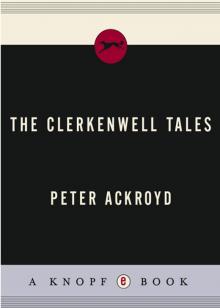 The Clerkenwell Tales
The Clerkenwell Tales The Canterbury Tales
The Canterbury Tales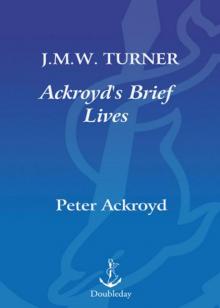 J. M. W. Turner
J. M. W. Turner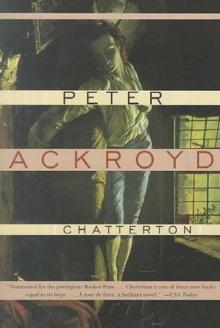 Chatterton
Chatterton The Canterbury Tales – A Retelling
The Canterbury Tales – A Retelling Alfred Hitchcock
Alfred Hitchcock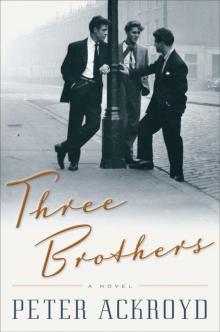 Three Brothers
Three Brothers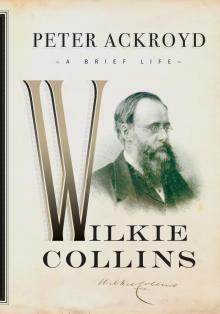 Wilkie Collins
Wilkie Collins Venice
Venice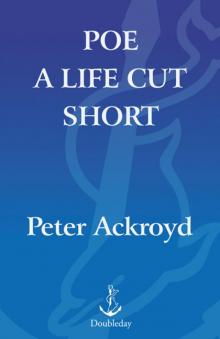 Poe
Poe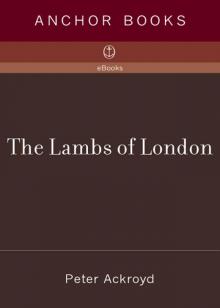 The Lambs of London
The Lambs of London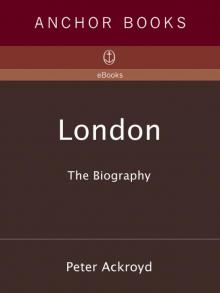 London
London Queer City
Queer City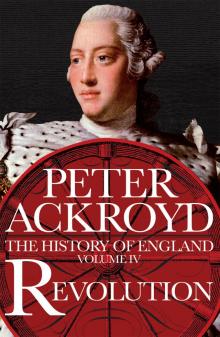 Revolution, a History of England, Volume 4
Revolution, a History of England, Volume 4 Venice: Pure City
Venice: Pure City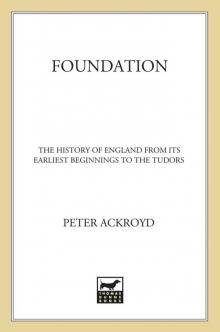 Foundation
Foundation Thames
Thames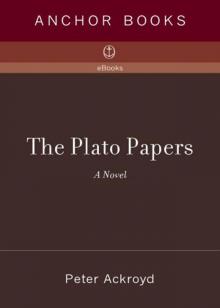 The Plato Papers
The Plato Papers The house of Doctor Dee
The house of Doctor Dee Rebellion: The History of England from James I to the Glorious Revolution
Rebellion: The History of England from James I to the Glorious Revolution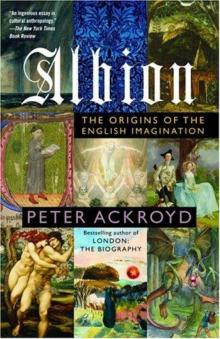 Albion: The Origins of the English Imagination
Albion: The Origins of the English Imagination The Fall of Troy
The Fall of Troy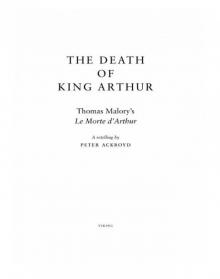 The Death of King Arthur
The Death of King Arthur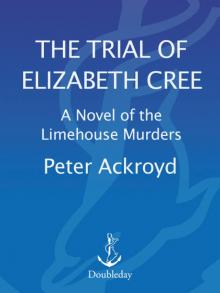 The Trial of Elizabeth Cree
The Trial of Elizabeth Cree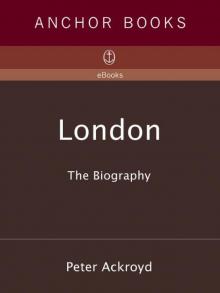 London: The Biography
London: The Biography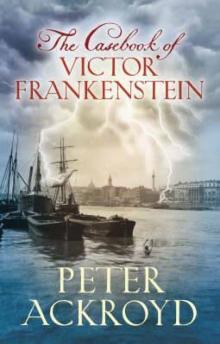 The Casebook of Victor Frankenstein
The Casebook of Victor Frankenstein Hawksmoor
Hawksmoor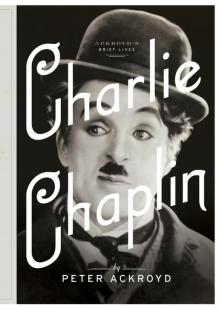 Charlie Chaplin
Charlie Chaplin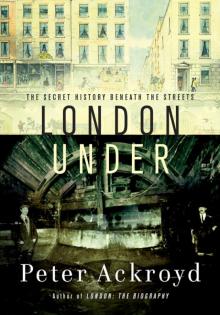 London Under
London Under